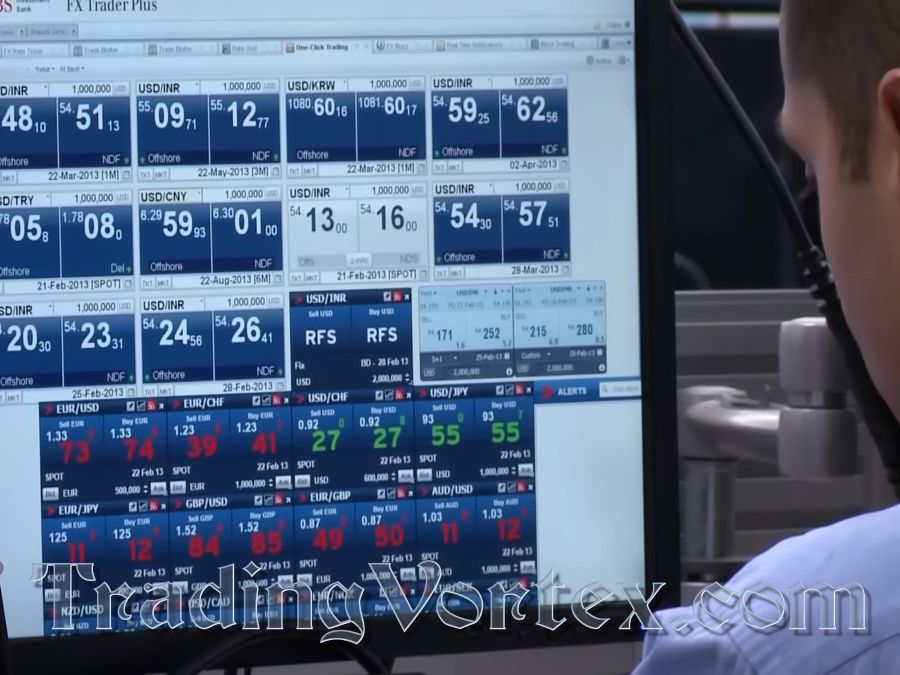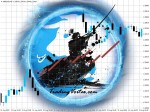Table Of Contents:
- Introduction to Correlation in Trading:
Types of Correlation in Trading:
Calculating and Interpreting Correlation Coefficients:
Correlation vs. Causation in Trading Strategies:
Leveraging Correlation for Diversification Strategies:
Applying Correlation in Technical Analysis:
Correlation-Based Trading Strategies:
Practical Examples of Correlation in Real Market Scenarios:
Advanced Correlation Techniques for Experienced Traders:
Best Practices and Tips for Using Correlation in Trading:
Conclusion: Harnessing the Power of Correlation in Trading.
Introduction to Correlation in Trading:
In the vast and dynamic world of financial markets, the concept of correlation is fundamental. Understanding the basics of correlation and its pivotal role in trading can be the key to informed decision-making and effective risk management. In this section, we'll explore the foundations of correlation and highlight its profound importance within the context of financial markets.
Understanding the Basics of Correlation:
- A positive correlation (a coefficient closer to 1): suggests that the variables move in the same direction. When one asset's value rises, the other tends to rise as well. Conversely, when one falls, the other typically does too.
- A negative correlation (a coefficient closer to -1): indicates an inverse relationship. Here, when one asset's value rises, the other falls, and vice versa. This can serve as a form of hedging or diversification.
- No correlation (a coefficient close to 0): implies that there is little to no linear relationship between the variables. Changes in one asset's value do not predict or influence changes in the other.
Correlation provides traders and investors with a statistical tool to assess how different assets or instruments co-move in their respective markets. This insight is invaluable for constructing diversified portfolios, devising effective risk management strategies, and enhancing trading decisions.
Importance of Correlation Analysis in Financial Markets:
The importance of correlation analysis in financial markets cannot be overstated. It forms the basis for constructing diversified portfolios that aim to reduce risk and enhance returns. By combining assets with low or negative correlations, investors can spread their risk across different sectors, asset classes, or regions, mitigating the impact of poor performance in any single asset.
Moreover, understanding correlation is crucial in risk management. A solid grasp of how assets interact can help traders hedge their positions effectively. For instance, "if a trader holds a long position in one asset and identifies a strongly negatively correlated asset, they can use the latter to protect against potential losses in the former".
In summary, correlation analysis serves as a powerful tool in the arsenal of traders and investors, enabling them to make informed decisions, reduce risk, and optimize their portfolios. The following sections of this article will delve deeper into the types of correlation, how to calculate and interpret correlation coefficients, and provide practical insights into using this knowledge in trading strategies.
Types of Correlation in Trading:
Correlation in trading is a versatile concept with various forms, each carrying distinct implications for investors and traders. In this section, we will explore the three primary types of correlation: positive, negative, and no correlation, shedding light on the characteristics and applications of each.
Positive Correlation Explained:
For traders and investors, positive correlation can be both an opportunity and a risk. It offers the potential for portfolio diversification, as positively correlated assets may provide consistent returns. However, it's essential to be cautious of over-concentration in such assets, as a downturn in one can trigger a domino effect in the others, amplifying losses.
Negative Correlation Explained:
Traders often use negatively correlated assets to hedge their positions. By holding assets that move inversely, they can offset potential losses in one with gains in the other, thereby reducing overall portfolio risk. Precise selection of negatively correlated assets is critical for effective risk mitigation.
No Correlation Explained:
Assets with no correlation can serve as a valuable component of a diversified portfolio. While they may not offer the risk mitigation benefits of negative correlation, they add a layer of independence, potentially reducing overall portfolio risk. Moreover, trading assets with no correlation may provide unique opportunities for risk-tolerant traders who can capitalize on the individual dynamics of each asset.
In summary, understanding the different types of correlation is pivotal for making informed trading decisions. Positive correlation can be advantageous for consistent returns but may require diversification to manage risks. Negative correlation is a key tool for risk management, while no correlation assets offer independence and potentially unique trading opportunities. The next sections of this article will delve into how to calculate and interpret correlation coefficients and apply this knowledge in trading strategies.
Calculating and Interpreting Correlation Coefficients:
Correlation coefficients lie at the heart of understanding the relationships between different assets in trading. They provide a quantitative measure of the strength and direction of the relationship, helping traders and investors make informed decisions. In this section, we'll explore the methodologies for calculating correlation coefficients and delve into how to interpret these coefficients in the context of trading.
Methodologies for Calculating Correlation Coefficients:
There are several methods to calculate correlation coefficients, but the two most common ones are the Pearson correlation coefficient (also known as the Pearson product-moment correlation coefficient) and the Spearman rank correlation coefficient.
- Pearson Correlation Coefficient: This method is ideal for calculating correlations between two continuous variables. It quantifies the linear relationship between variables, producing a coefficient that ranges from -1 (perfect negative correlation) through 0 (no correlation) to 1 (perfect positive correlation). The formula for the Pearson correlation coefficient involves covariance and the standard deviations of the variables, making it a valuable tool for analyzing linear relationships.
- Spearman Rank Correlation Coefficient: When dealing with non-linear relationships or variables measured on an ordinal or interval scale, the Spearman rank correlation coefficient is a suitable choice. This method involves converting the values into ranks and then calculating the correlation based on these ranks. Spearman's coefficient ranges from -1 (perfect negative rank correlation) to 1 (perfect positive rank correlation) with 0 indicating no rank correlation.
Interpreting Correlation Coefficients in Trading:
Interpreting correlation coefficients is crucial in trading. These coefficients provide insights into how assets are likely to behave in relation to each other, and such insights can influence trading decisions.
- Strong Positive Correlation (Close to 1): When assets have a correlation coefficient close to 1, they tend to move in the same direction. Traders should be cautious about over-concentrating their portfolios in such assets, as a downturn in one can lead to simultaneous losses in others. Diversification may be necessary to manage risks.
- Strong Negative Correlation (Close to -1): Assets with a correlation coefficient close to -1 move in opposite directions. This can be used for hedging purposes. Traders can hold negatively correlated assets to offset potential losses in one asset with gains in the other, effectively reducing overall portfolio risk.
- No Correlation (Close to 0): When the correlation coefficient is close to 0, it implies that the assets are essentially independent of each other. Changes in one asset's value do not predict or influence changes in the other. Such assets can be included in a diversified portfolio to add an extra layer of independence.
It's important to note that correlation does not imply causation. Just because two assets are correlated does not mean one causes the other to move. Accurate causal inference is a separate process that traders and investors should approach with care.
In the subsequent sections of this article, we will explore the crucial distinction between correlation and causation, the application of correlation in diversification and technical analysis, and specific trading strategies that leverage these insights.
Correlation vs. Causation in Trading Strategies:
In the intricate landscape of financial markets, understanding the distinction between correlation and causation is paramount. This section explores the critical differences between these concepts and emphasizes the importance of causal inference in the realm of trading.
Differentiating Correlation and Causation in Financial Markets:
Avoiding Pitfalls: The Importance of Causal Inference in Trading.
Understanding the limits of correlation and the importance of causal inference is crucial for traders and investors. Relying solely on correlation can lead to costly mistakes. Here are some key considerations:
- Confounding Variables: In trading, numerous factors can affect asset prices. A correlation between two assets might be coincidental or influenced by other variables. Traders need to exercise caution and use other tools and techniques to establish causation when necessary.
- Risk of Overfitting: Creating trading strategies based purely on correlation without considering causal factors can result in overfitting. Overfit strategies might perform well in historical data but perform poorly in real-world markets because they lack a fundamental understanding of causation.
- Market Dynamics: Market conditions are constantly changing, and what was once a strong correlation between assets may weaken or break down altogether due to shifts in market dynamics or the introduction of new variables.
To successfully navigate the complexities of financial markets, traders should incorporate causal inference into their strategies. This involves a deeper understanding of the underlying factors driving asset movements, such as economic indicators, company news, geopolitical events, and market sentiment.
In essence, while correlation analysis is a valuable tool for identifying relationships between assets, traders must remember that correlation does not imply causation. To make well-informed trading decisions, the ability to discern true causal relationships is paramount, as it allows for more precise forecasting and risk management. The subsequent sections of this article will delve into leveraging correlation for diversification and technical analysis, as well as providing practical examples of correlation in real market scenarios.
Leveraging Correlation for Diversification Strategies:
Diversification is a cornerstone of sound investment and trading practices. Utilizing correlation analysis is essential for building diversified portfolios and managing risk effectively. In this section, we will explore the strategies for leveraging correlation to enhance diversification and implement robust risk management techniques.
Using Correlation to Build a Diversified Portfolio:
Building a diversified portfolio involves selecting a mix of assets that are not highly correlated with each other. The objective is to spread risk and reduce the impact of poor performance in any single asset on the overall portfolio. Here's how correlation analysis aids in constructing diversified portfolios:
- Asset Selection: By examining the correlations between different assets, traders and investors can choose assets that have lower or negative correlations with one another. For instance, "combining assets that tend to move in opposite directions (negative correlation) can be an effective way to balance risk".
- Risk Reduction: Diversifying the portfolio with assets that are less correlated can help reduce overall portfolio volatility. When one asset experiences a decline, other less correlated assets can offset some of the losses, mitigating the impact on the portfolio.
- Performance Stability: Diversification can enhance portfolio stability by reducing the likelihood of experiencing extreme swings in value. This can be particularly important for risk-averse investors who seek a more predictable performance.
Risk Management Techniques with Correlation Analysis:
Correlation analysis also plays a crucial role in risk management. Here are some techniques that traders use to manage risk through correlation analysis:
- Hedging: As mentioned earlier, negatively correlated assets can be used for hedging. When a trader holds a long position in one asset and identifies another asset that is negatively correlated, they can use the latter to protect against potential losses in the former. For example, "if a trader holds a long position in a stock and sees that gold tends to move inversely with the stock, they might invest in gold to offset potential losses in the stock".
- Stop-Loss and Take-Profit Strategies: Traders can set stop-loss and take-profit levels for their positions based on correlation analysis. If two assets are highly positively correlated, and one is approaching a take-profit level, the trader might consider setting a take-profit level for the other asset as well, to lock in gains from both positions.
- Dynamic Portfolio Adjustments: Correlation analysis can help traders make dynamic adjustments to their portfolios as market conditions change. If assets that were once uncorrelated start to move in the same direction due to changing market dynamics, traders may need to reevaluate their risk exposure and make necessary adjustments.
In conclusion, leveraging correlation for diversification and risk management is a fundamental practice in trading and investing. It enables individuals to construct portfolios that are less susceptible to market fluctuations and offers essential tools for mitigating risk. In the upcoming sections of this article, we will explore how correlation analysis can be applied in technical analysis, and we'll provide real-world case studies to illustrate its practical usage in financial markets.
Applying Correlation in Technical Analysis:
Correlation analysis is a valuable tool not only for diversification and risk management but also for technical analysis in trading. In this section, we will explore the application of correlation in technical trading strategies and how traders can integrate correlation indicators into their trading systems to make more informed decisions.
Correlation Analysis in Technical Trading Strategies:
Correlation analysis can be a powerful asset in the arsenal of technical traders. While technical analysis typically focuses on price charts, patterns, and indicators for individual assets, integrating correlation analysis can provide additional insights and enhance trading strategies. Here's how correlation can be applied in technical trading:
- Identifying Sector Relationships: Traders can use correlation to identify relationships between different sectors within the market. For example, "if technology stocks are positively correlated with consumer discretionary stocks, a technical trader can monitor charts and technical indicators for both sectors to make more informed trades".
- Confirming Technical Signals: When technical signals, such as chart patterns or moving average crossovers, are observed for one asset, traders can use correlation analysis to check if similar signals are appearing for correlated assets. "If correlated assets are also showing bullish signals, it can provide additional confirmation for the trade".
- Divergence Analysis: Traders can employ correlation to identify instances of divergence between correlated assets. For instance, "if two currency pairs are typically positively correlated but start to move in opposite directions, it may indicate a potential trading opportunity based on the expectation that the correlation will revert to its historical state".
Integrating Correlation Indicators in Trading Systems:
To leverage correlation in technical analysis, traders can integrate correlation indicators into their trading systems. These indicators provide quantitative measures of correlation strength and direction and can be incorporated into trading strategies. Here are some correlation indicators commonly used in trading systems:
- Correlation Coefficient: This indicator quantifies the strength and direction of the correlation between two assets. It provides a numerical value that traders can use to make decisions. For example, if the correlation coefficient is close to -1, it suggests a strong negative correlation, which could be used for hedging.
- Relative Strength Index (RSI): RSI is a popular momentum oscillator used in technical analysis. Traders can use RSI to assess overbought and oversold conditions for an asset. By comparing the RSI values of correlated assets, traders can identify potential divergence and trading opportunities.
- Moving Averages: Moving averages, such as the simple moving average (SMA) or exponential moving average (EMA), can be used to assess trends. Traders can compare the moving averages of correlated assets to identify instances where trends align or diverge.
- Correlation Heatmaps: Correlation heatmaps visually represent the correlation matrix between multiple assets. These visual aids can help traders quickly identify strong and weak correlations among a group of assets.
Incorporating correlation indicators and analysis into technical trading systems adds a layer of data-driven decision-making to the trader's toolkit. It provides a systematic approach to making trades based on the relationships between assets, enhancing the overall effectiveness of technical analysis.
In the subsequent sections of this article, we will provide practical examples of correlation in real market scenarios and explore advanced correlation techniques and tools for experienced traders.
Correlation-Based Trading Strategies:
Correlation-based trading strategies are designed to capitalize on the relationships between different assets in financial markets. By identifying and leveraging these correlations, traders can make informed decisions and potentially enhance their trading performance. In this section, we will provide a comprehensive overview of correlation-based trading models and explore the implementation of these strategies across various market scenarios.
Correlation-Based Trading Models: A Comprehensive Overview.
Correlation-based trading models are grounded in the fundamental principle that the movement of one asset can influence or predict the movement of another, based on their historical correlation patterns. Here are some key correlation-based trading models:
- Pairs Trading: Pairs trading is a classic correlation-based strategy where traders go long on one asset and short on another when their historical correlation suggests that they are likely to move in opposite directions. The strategy aims to profit from the convergence of the two assets' prices.
- Statistical Arbitrage: Statistical arbitrage, or stat arb, involves identifying assets with historical correlations and then taking advantage of deviations from their expected correlation levels. Traders enter positions when the correlation deviates significantly from the historical norm, with the expectation that it will revert to the mean.
- Cointegration Strategies: Cointegration is a more advanced form of pairs trading. It involves identifying assets whose price movements are cointegrated, meaning they share a long-term relationship despite short-term fluctuations. Traders exploit the divergence and convergence of the cointegrated assets.
- Risk Parity: Risk parity strategies allocate capital based on the risk contributions of different assets. These strategies often incorporate correlation data to ensure that the portfolio is well-diversified across assets with varying correlations.
Implementing Effective Correlation-Based Strategies in Different Markets:
Correlation-based trading strategies can be implemented across a wide range of financial markets, including equities, currencies, commodities, and more. The key to successful implementation lies in understanding the unique characteristics of each market and tailoring the strategy accordingly:
- Equity Markets: In equity markets, traders often employ pairs trading and statistical arbitrage strategies. These markets offer a plethora of correlated assets, making it conducive for these strategies.
- Forex (Foreign Exchange) Markets: In the forex market, currency pairs often exhibit strong correlations, driven by economic factors and geopolitical events. Traders can use these correlations to inform their trading decisions.
- Commodity Markets: Commodity markets, including those for oil, gold, and agricultural products, can exhibit correlations influenced by factors like supply and demand dynamics. Traders can use these correlations to manage risk and identify trading opportunities.
- Fixed-Income Markets: Fixed-income securities and bonds can also be subject to correlations, especially in response to changes in interest rates or macroeconomic factors. Traders may use correlation-based strategies to optimize bond portfolios.
- Cryptocurrency Markets: The emerging cryptocurrency markets are not immune to correlations. Traders can employ correlation-based strategies to navigate the volatility and interconnectedness of cryptocurrencies.
In conclusion, correlation-based trading strategies offer a systematic and data-driven approach to trading in various financial markets. They are particularly valuable for traders looking to diversify their portfolios, manage risk, and potentially capitalize on market inefficiencies driven by asset relationships.
As we proceed in this article, we will delve into practical examples of correlation in real market scenarios and explore advanced correlation techniques and tools for experienced traders.
Practical Examples of Correlation in Real Market Scenarios:
To truly appreciate the significance of correlation in trading, it's invaluable to examine real-world case studies and observe how correlation analysis can inform trading decisions and risk management. In this section, we'll delve into practical examples of correlation in recent market scenarios and showcase its application in various trading contexts.
Real-world Case Studies on Correlation in Trading:
- Equity Markets during Economic Crises: During economic crises, such as the 2008 financial crisis, a strong positive correlation was observed among many equities. When the broader market indices, like the S&P 500, plummeted, most individual stocks followed suit. Traders who failed to diversify their portfolios were heavily impacted. This case underscores the importance of understanding and managing correlations during periods of market stress.
- Currency Pairs in Forex: In the foreign exchange market, currency pairs often display correlations based on economic fundamentals. For instance, the Australian dollar (AUD) is closely linked to the prices of commodities like gold and iron ore. Traders who recognized this correlation could adjust their positions in AUD currency pairs based on trends in these commodities, enhancing their forex trading strategies.
Analyzing Correlation in Recent Market Trends:
- Tech Stocks in the Nasdaq: In the modern era, the technology sector has experienced significant growth. Notably, tech stocks like Apple, Amazon, and Microsoft have often exhibited positive correlations. When these stocks move together, their collective impact on indices like the Nasdaq is substantial. Traders who identified this trend could adapt their strategies to leverage this correlation or hedge against market downturns.
- Cryptocurrency Correlations: Cryptocurrencies have emerged as a highly correlated asset class. Bitcoin, as the pioneer cryptocurrency, often sets the tone for the entire market. When Bitcoin experiences significant price movements, it tends to influence the prices of other cryptocurrencies like Ethereum, Litecoin, and Ripple. Traders in the cryptocurrency space closely monitor these correlations to make timely trading decisions.
- Interest Rates and Bond Prices: In the fixed-income market, interest rates and bond prices exhibit a well-documented negative correlation. When central banks raise interest rates, bond prices tend to fall, and vice versa. Traders and investors in the bond market use this correlation to anticipate interest rate changes and make informed decisions regarding bond investments.
These practical examples underscore the real-world significance of correlation in trading across various asset classes. By recognizing and effectively applying correlation data, traders can adapt their strategies, optimize portfolio diversification, and enhance risk management.
In the subsequent sections of this article, we will explore advanced correlation techniques and tools for experienced traders and discuss best practices and tips for using correlation in trading effectively.
Advanced Correlation Techniques for Experienced Traders:
For experienced traders looking to maximize the benefits of correlation analysis, advanced techniques and tools provide a competitive edge. In this section, we will explore the advanced correlation analysis tools and software available and discuss recent innovations in correlation-based trading techniques.
Advanced Correlation Analysis Tools and Software:
- Correlation Matrices: Advanced traders often use correlation matrices to visualize the relationships between multiple assets simultaneously. These matrices provide a comprehensive overview of correlations and can be customized to include a wide range of assets. Software tools like Python with libraries like NumPy and pandas, as well as specialized financial analysis software, can generate correlation matrices.
- Principal Component Analysis (PCA): PCA is a dimensionality reduction technique that can reveal latent factors driving correlations in a portfolio. By applying PCA to asset returns, traders can uncover underlying patterns and structure in their portfolios. Various programming languages and statistical software packages, such as R or Python, offer PCA tools.
- Co-integration Analysis: For traders engaged in statistical arbitrage or pairs trading, co-integration analysis is essential. This advanced technique helps identify asset pairs whose price spreads are mean-reverting. Software packages like MATLAB, RATS, or EViews offer co-integration analysis tools.
- Machine Learning Algorithms: Machine learning models can analyze correlations and discover non-linear relationships that traditional statistics might miss. Traders can implement machine learning algorithms in Python (using libraries like scikit-learn) or R to predict correlations and enhance trading strategies.
Innovations in Correlation-Based Trading Techniques:
- Dynamic Portfolio Optimization: Some advanced traders use dynamic portfolio optimization techniques that constantly adjust portfolio weights based on changing correlations. This strategy capitalizes on dynamic correlations, taking advantage of market conditions as they evolve.
- Machine Learning for Prediction: Machine learning models can predict future correlations based on historical data and other factors. Traders can use these predictions to make timely decisions and adjust their portfolios in anticipation of changing correlations.
- Options Trading Strategies: Experienced traders in options markets employ strategies that leverage correlations between the underlying asset and its options. For example, delta-neutral strategies aim to profit from changes in correlation between options and the underlying asset.
- High-Frequency Trading (HFT): High-frequency trading firms often use advanced algorithms to exploit minuscule changes in correlations between assets over very short time intervals. HFT strategies require robust technology infrastructure and low-latency data feeds.
- Risk Parity Strategies: Beyond basic risk parity approaches, advanced traders explore innovative risk parity techniques that consider not only correlations but also factors like market regime changes and macroeconomic data.
Experienced traders can take advantage of these advanced correlation techniques to gain a deeper understanding of asset relationships and develop more sophisticated trading strategies. However, it's essential to exercise caution and continually monitor and adapt strategies as markets evolve.
As we progress in this article, we will discuss best practices and tips for using correlation effectively, which can be especially beneficial for traders employing advanced techniques.
Best Practices and Tips for Using Correlation in Trading:
Effectively using correlation in trading requires not only understanding the concept but also implementing it wisely. In this section, we'll delve into best practices and offer valuable tips for traders seeking to harness the power of correlation in their strategies.
Key Considerations for Accurate Correlation Analysis:
- Use High-Quality Data: Reliable data is the foundation of accurate correlation analysis. Ensure that the data you use is accurate, up-to-date, and from reputable sources. Inaccurate or outdated data can lead to incorrect correlations.
- Consider the Timeframe: Correlation can vary over different timeframes. Short-term correlations may not hold over the long term. Define your trading horizon and choose appropriate timeframes for your analysis.
- Beware of Spurious Correlations: Not all correlations imply causation. Be cautious of spurious correlations, which are coincidental and not meaningful. Always strive to understand the underlying drivers of the correlation.
- Distinguish Between Linear and Non-Linear Relationships: Correlation measures linear relationships. In some cases, assets may have non-linear relationships that correlation analysis may not capture. Consider using advanced techniques like machine learning to detect non-linear relationships.
Fine-tuning Trading Strategies with Correlation Data:
- Diversify with Purpose: Diversification is a core strategy for managing risk. Use correlation data to diversify your portfolio effectively. Seek assets with low or negative correlations to reduce risk, but remember that excessive diversification can dilute returns.
- Monitor Changing Correlations: Correlations can change over time, especially in response to market events or economic shifts. Regularly monitor your assets' correlations and be prepared to adjust your trading strategies when necessary.
- Use Correlation in Risk Management: Correlation can be a valuable tool for risk management. By incorporating negatively correlated assets into your portfolio, you can hedge against potential losses in other assets.
- Apply Correlation to Technical Analysis: Integrate correlation analysis into your technical analysis. When using technical indicators or chart patterns, consider whether correlated assets are displaying similar signals, which can provide added confirmation for your trades.
- Balance Short-Term and Long-Term Analysis: Depending on your trading style, balance short-term and long-term correlation analysis. Short-term correlations can be useful for day traders, while long-term correlations may be more relevant for investors with a longer time horizon.
- Combine Correlation with Fundamental Analysis: Correlation analysis should complement, not replace, fundamental analysis. For comprehensive trading decisions, combine correlation insights with fundamental research into individual assets.
- Stay Informed: The financial markets are dynamic, and correlations can change rapidly. Stay informed about market developments, news, and economic factors that can influence correlations.
- Practice Risk Management: While correlation can help manage risk, it's not a fail-safe mechanism. Implement solid risk management practices, including setting stop-loss orders and position sizing, to protect your capital.
By following these best practices and tips, traders can optimize their use of correlation analysis, making it a valuable tool in their trading toolkit. When used judiciously and in conjunction with other trading techniques, correlation analysis can enhance trading strategies and decision-making, helping traders achieve their financial goals.
Conclusion: Harnessing the Power of Correlation in Trading.
In the world of financial markets, the power of correlation cannot be overstated. It serves as a compass for traders and investors, guiding them through the complex landscape of asset relationships. This article has been a journey into the heart of correlation in trading, exploring its significance, applications, and advanced techniques. Let's conclude by summarizing the importance of correlation in financial decision-making and pondering the future of correlation analysis in trading.
Summarizing the Importance of Correlation in Financial Decision-Making:
Correlation is a pillar of financial decision-making, offering several critical advantages:
- Risk Management: Correlation analysis enables traders and investors to diversify their portfolios effectively. By selecting assets with low or negative correlations, they can reduce overall portfolio risk and protect against potential losses.
- Strategy Enhancement: Correlation insights can enhance trading strategies. Traders can use correlation data to confirm signals from technical analysis, anticipate market movements, and fine-tune their positions.
- Informed Decision-Making: Understanding the relationships between assets empowers traders to make informed decisions. Whether you are managing a portfolio or executing a single trade, correlation data can add a layer of certainty and precision to your choices.
- Flexibility: Correlation-based strategies are flexible and versatile. They can be applied across various asset classes, including equities, forex, commodities, bonds, and cryptocurrencies, making them invaluable tools for a wide range of traders.
Looking Ahead: The Future of Correlation Analysis in Trading.
As financial markets continue to evolve, so does the role of correlation analysis. The future promises even more exciting developments:
- Big Data and Machine Learning: The advent of big data and machine learning has transformed the way traders analyze correlations. Advanced algorithms can now identify and predict complex relationships, opening up new horizons for trading strategies.
- Interconnected Markets: As global markets become more interconnected, the correlations between different assets are evolving. Traders will need to adapt and innovate their strategies to navigate the intricacies of these dynamic relationships.
- Crypto and Alternative Markets: Emerging asset classes like cryptocurrencies and alternative investments are introducing new forms of correlation. These markets will continue to provide unique opportunities and challenges for correlation analysis.
- Risk Paradigm Shifts: The future may witness shifts in the way traders approach risk. Advanced risk parity models and other risk management strategies will evolve to incorporate more data-driven correlation insights.
In this ever-changing landscape, traders who master the art of correlation analysis will remain at the forefront of financial decision-making. The ability to harness the power of correlation is not only a valuable skill today but will continue to be an essential asset in the years to come.
Correlation analysis is not just a tool; it's a mindset. It's a way of thinking that incorporates data-driven insights into every trading decision. Whether you are a novice trader seeking to diversify your portfolio or an experienced professional developing advanced correlation-based strategies, this fundamental concept is the key to unlocking success in the intricate world of financial markets. As you embark on your trading journey, remember that correlation analysis is not just a tool in your trading arsenal; it's the thread that weaves together the fabric of sound financial decision-making.











































 TradingVortex.com® 2019 © All Rights Reserved.
TradingVortex.com® 2019 © All Rights Reserved.